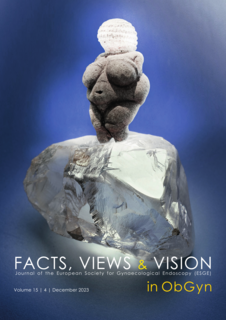Cavernous haemangioma and mid trimester pregnancy loss leading to severe haemorrhage and hysterectomy: a case report and review of literature
Haemangioma, pregnancy, bleeding, hysterectomy
Published online: Dec 13 2023
Abstract
Background: Cavernous haemangiomas are benign vascular tumours that are known to occasionally involve the female genital tract, including the uterus. They are often underdiagnosed during pregnancy, although they can also lead to severe postpartum or antepartum haemorrhage.
Objectives: Describe our case of an uncommon second-trimester pregnancy loss in a woman with a diffuse cavernous haemangioma of the uterus and cervix and review the wider literature.
Methods: The review was conducted using MEDLINE, Scopus and PubMed electronic databases from beginning of the database to May 2023, using the following keywords: arteriovenous malformation; cavernous haemangioma/hemangioma; uterine neoplasms; pregnancy complications; abnormal vaginal bleeding.
Main outcome measures: Description of the characteristics of cavernous haemangioma during pregnancy as well as diagnostic criteria and treatment options.
Results: Twenty publications were included in the review, which included English-language case reports over a period from 1959 to 2022. No pathognomonic symptoms for cavernous haemangioma of the uterus in a pregnant woman were noted. Complications including massive secondary postpartum haemorrhage, haemoperitoneum, and severe thrombocytopenia with anaemia after delivery were reported.
Conclusions: Diagnosis and management during pregnancy can be challenging and requires considerable attention, with a multidisciplinary approach including gynaecologists, radiologists, and pathologists to avoid major complications.
What is new? An additional case of diffuse cavernous haemangioma of the uterus and cervix is described, that adds to the little existing literature.



